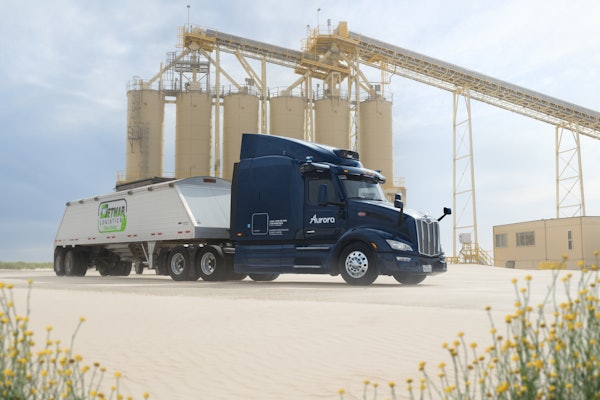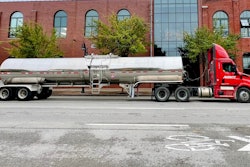According to the Q4 Fleet Sentiment Report, prepared by CK Marketing & Communications, 81 percent of fleets polled are planning to purchase power units in the next six months, up from 71 percent in the third quarter.
Kenworth announced that it is offering new, higher-horsepower, higher-torque Caterpillar C13 and C11 engines in its Class 8 products. The company also announced that it is offering selected lightweight Holland FW17 Series fifth wheels on its on-highway Class 7 and 8 vehicles.
Goodyear Tire & Rubber Co. announced that its Unisteel G338 drive tread design for high-torque applications is available as a UniCircle precured retread.
Bendix Commercial Vehicle Systems is offering a fleet value calculator to assist fleets in determining the return on investing in advanced braking and stability systems. For more information, call 800-AIR-BRAKE [(800) 247-2725] or contact your Bendix account manager.
Great Dane Limited Partnership has acquired a new production facility in Scott County, Tenn., slated for startup in the first half of 2005. In related news, the 2004 Capitol Holiday Tree will be hauled into Washington, D.C. on a Great Dane flatbed by Camrett Logistics.
Freightliner Trucks has launched www.freightlinertruckstore.com, an online shopping center offering Freightliner-logoed merchandise.
ArvinMeritor will offer its new ChassiPak chassis axle package for the intermodal transport industry next month.
BP Lubricants Americas launched Castrol Tection Extra engine oil, which the company says resists viscosity breakdown in heavy-duty diesels.
Fleet managers can order a wheel-end, torque-spec wall chart from Webb Wheel Products by visiting this site or by calling 800-633-3256 in the United States or 800-257-3889 in Canada.
The Commercial Vehicle Systems group of Dana Corp. recently introduced its SmartRide family of trailer suspension products at its plant in Lugoff, S.C. According to Steve Slesinski, director of product planning, SmartRide suspension assemblies are designed with Dana proprietary software, which allows accurate and rapid analysis of components during the virtual design phase, helping Dana engineers achieve weight savings without sacrificing strength. Computer simulation testing, as well as track and field testing, is used to validate designs. As a result, the suspensions use material more efficiently.
For example, Dana uses 53/4-inch axle tubing with a 3/8-inch wall, which the company says produces a 15 percent increase in bending stiffness and a 30-pounds-per-axle weight savings over the traditional 5-inch tubing with a 5/8-inch wall.
In addition to air-ride suspension systems available in standard or wide-based configurations, Dana now offers highly customized suspension modules, thanks, in part, to a joint venture with Bendix. With this program, customers can create complete, individually customized suspension packages. The menu includes:
*Dana Spicer Tire Maintenance Systems (TMS), an intelligent tire inflation system that measures and maintains proper pressure for improved tire life, safety and fuel economy;
*Dana Spicer Low Maintenance System Hubs (LMS), which include controlled bearing adjustment, Outrunner seals and special bearings that help prevent premature wheel seal failures;
*Bendix Braking Systems, which include: air disc brakes; Extended Service brakes; TABS-6, a new trailer ABS product that allows vehicles to be configured with custom features such as remotely controlled slider pins and reefer temperature monitoring; and a smorgasbord of relay valves, actuators, air dryers and water separators;
*Bendix’ Trailer Roll Stability Program (TRSP).
The idea, says Slesinski, is to allow customers to spec trailer products from one source that work together in one suspension module.
For more information, call 800-826-HELP in the United States and Canada, or visit this site.
SAE counts down to (near) zero
The Society of Automotive Engineers (SAE) launched its “Countdown to near Zero” emissions program at its first annual SAE Commercial Vehicle Engineering Congress and Exhibition – which has incorporated the former Truck & Bus meeting. The program brought together engineers, suppliers and manufacturers in the truck and bus industry and those in off-highway and agricultural machinery manufacturing to address the U.S. Environmental Protection Agency’s new emissions regulations for heavy-duty diesel engines that are set to be phased in over the next several years.
Through SAE’s on-going Countdown to near Zero program activities, the society will act as a conduit for information and provide opportunities for discussion on emissions technologies. SAE’s commercial vehicle event is a forum to explore the technology options that are being developed to meet these regulations.
For more information on SAE’s Commercial Vehicle Engineering Congress and Exhibition, and Countdown to near Zero activities, please call SAE World Headquarters at (724) 776-4841 or visit this site.
Block heat, not light
Traditionally, applied window film is the least expensive and preferred way to reduce solar heat entering vehicle interiors, according to Marty Watts, president & CEO, V-Kool, Houston. However, he adds, tinted and reflective films also reduce visible light, darkening window glass and interiors. That means drivers may have difficulty seeing out at night, and being seen through the glass from outside the vehicle, posing safety and security issues. For this reason the application of conventional tinted and reflective films on windshield, rear windows and sometimes side windows is restricted by law.
A new solution to interior overheating, says Watts, is clear, spectrally selective film. It works because light, heat and ultraviolet (UV) rays exist on different wavelengths of the solar spectrum. The new film uses an invisible metallic coating of silver and gold to reflect the wavelengths of solar infrared heat and UV, but not that of visible light.
In most states, says Watts, high light-transmitting, spectrally selective film can be installed legally on a vehicle’s front, side and rear window glass to reduce heat without sacrificing visibility.
For more information, visit this site.
Equipment Puzzler
In October, we asked: What’s the difference between a conventional, low-silicate coolant and a fully formulated one?
Don Colaluca, shop manager for Con-Way Southern Express in Dallas, was the first to e-mail the answer to [email protected]. He wrote: “A fully formulated coolant contains an initial SCA dose in the mix, while the conventional coolant does not.”
Don will receive a chrome CCJ pen and Air Brake Book. You can, too, if you’re first to e-mail the right answer to this month’s Puzzler, or if you send in a Puzzler of your own and we use it.
This month’s Puzzler:
How can you use a volt-ohmmeter to bench-test a simple, double-pole, single-throw (DPST) toggle switch?









